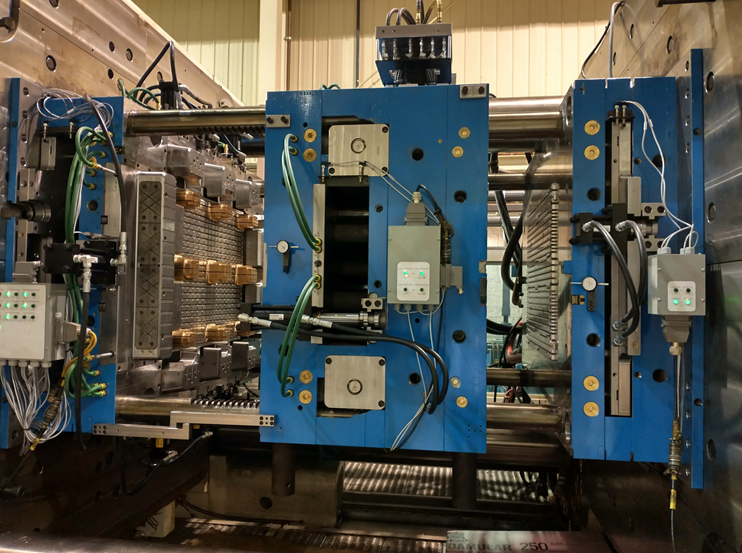Creating a Perfect Plastic Chair Mold: A Guide for Manufacturers
Introduction:
The plastic chair industry has seen significant growth over the years, with manufacturers constantly striving to produce high-quality products at competitive prices. One crucial aspect of achieving this goal is creating a perfect plastic chair mold. A well-designed mold ensures consistent production, reduces waste, and improves the overall quality of the final product. In this guide, we will discuss the key factors to consider when designing a plastic chair mold.
1. Material Selection:
The first step in creating a perfect plastic chair mold is selecting the right material. Common options include polypropylene (PP), polyethylene (PE), and polycarbonate (PC). Each material has its own set of properties, such as strength, flexibility, and impact resistance. Manufacturers must carefully evaluate these characteristics to determine which material best suits their specific requirements.
2. Mold Design:
Once the material is selected, the mold design process begins. It is crucial to create a mold that is durable, cost-effective, and capable of producing chairs with consistent dimensions. The mold should also allow for easy removal of the finished product, minimizing the risk of damage during extraction. Precision is key when designing the different components of the mold, such as the core, cavity, and cooling channels.
3. Cooling System:
An efficient cooling system is essential for achieving a perfect plastic chair mold. Proper cooling helps prevent warping and ensures consistent part quality by controlling the cooling rate. Various cooling techniques, such as direct cooling channels or conformal cooling, can be implemented to optimize the cooling process. The mold designer must carefully consider the layout and size of the cooling channels to maximize their effectiveness.
4. Parting Line Design:
The parting line is the point where the two halves of the mold meet. It is vital to design a parting line that minimizes flashing and ensures proper alignment of the mold halves. A well-defined parting line contributes to the overall quality and visual appearance of the plastic chair. Manufacturers should consider incorporating features like draft angles and shut-off surfaces to facilitate smooth ejection of the finished product.
5. Venting:
Effective venting is crucial in preventing gas traps and ensuring the proper flow of molten plastic during the injection process. Insufficient venting can result in aesthetic defects like silver streaks or burn marks on the chair. The mold designer should incorporate venting channels or venting grooves strategically to allow trapped air to escape while maintaining the structural integrity of the mold.

6. Ejection System:
The ejection system plays a vital role in safely removing the plastic chair from the mold without causing damage. Proper ejection should be designed to avoid any interference with the chair\’s shape or structure. The ejection pins or blades should be placed strategically to ensure smooth ejection without leaving any visible marks on the finished product.
7. Mold Maintenance:
Regular maintenance is essential to keep the plastic chair mold in optimal condition. Manufacturers should establish a maintenance schedule to inspect and clean the mold regularly. This helps prevent issues such as wear and tear or the accumulation of plastic residues, which can affect the quality and lifespan of the mold.
Conclusion:
Creating a perfect plastic chair mold requires careful consideration of various factors, including material selection, mold design, cooling systems, parting line design, venting, ejection systems, and mold maintenance. By focusing on these aspects, manufacturers can optimize their production processes, reduce waste, and produce high-quality plastic chairs consistently. The continuous pursuit of mold perfection will contribute to the overall growth and success of the plastic chair industry.
Vorig:Designing a High-Quality Plastic Bottle Crate Mould for Efficient Storage and Transport
Volgende: Introduction to Gate Injection Molding: A Key Process in Manufacturing
-
Aerospace Molding Parts manufacture: Precision Manufacturing for the Aerospace Industry
2023-6-5
The aerospace industry is one of the most demanding industries in the world, requiring precision manufacturing that meet...
Bekijk details -
medische spuitgietbedrijven die voldoen aan de behoeften van ziekenhuizen over de hele wereld
2022-10-29
Spuitgieten is een proces dat wordt gebruikt om objecten van plastic te maken.Het is een populaire productiemethode omdat het e...
Bekijk details -
Unleashing the Power of Insert Mold: Revolutionizing Manufacturing with English
2023-8-8
Introduction In today's fast-paced world, innovation and efficiency are essential for businesses to stay competitive. Am...
Bekijk details -
How do metal insert molds play a role in manufacturing?
2024-11-26
Metal insert molds play an important role in the manufacturing industry. They not only improve the production efficiency...
Bekijk details -
Dealing with Car Door Mold: Causes, Prevention, and Solutions
2023-6-14
As car owners, we all want our vehicles to look and smell good. However, one problem that can ruin the interior of our c...
Bekijk details -
Creating Admirable Large Plastic Pyramids with Molds
2023-7-11
Introduction: Plastic pyramids have become a popular choice for various architectural and design projects due to their v...
Bekijk details







